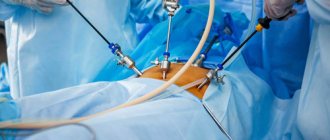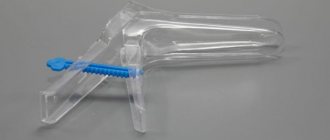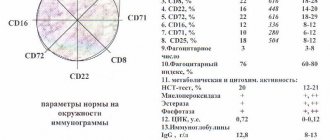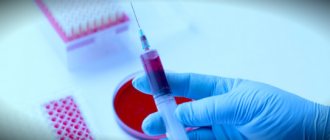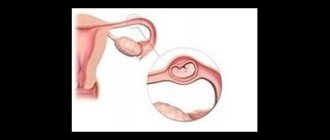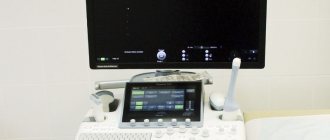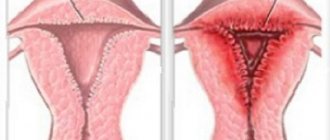Is pregnancy possible if the fallopian tubes are blocked?
If the fallopian tube is partially obstructed, a woman has a chance to become pregnant.
However, often with partial obstruction, an ectopic pregnancy develops - a condition in which a fertilized egg implants into the wall of the fallopian tube. If left untreated, life-threatening complications develop: massive bleeding, rupture of the fallopian tube, painful shock. Complete obstruction of the fallopian tubes is a serious diagnosis for a woman. With this gynecological syndrome, the lumen of the oviduct is completely blocked along its entire length. In this case, it can be argued that the woman is completely infertile.
The main causes of complete tubal obstruction can be adhesions, infection, and sterilization. In rare cases, a congenital anomaly occurs - underdevelopment or absence of fallopian tubes.
It is possible to eliminate complete tubal obstruction if the tube itself is not deformed and the inflammatory process has not reached the chronic stage.
In cases where it is not possible to restore tubal patency, the only way to get pregnant is through in vitro fertilization or surrogacy.
Is pregnancy possible if the fallopian tubes are blocked?
Indications for ultrasound of the appendages
The content of the article
Ultrasound of the appendages is performed when planning pregnancy. The gynecologist will definitely prescribe an ultrasound examination and, if there is a presumable diagnosis, infertility.
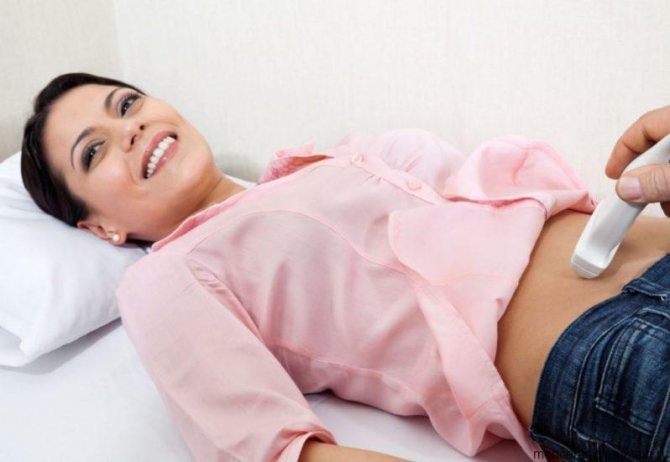
Diagnostics allows you to quickly and clearly assess the general health of a woman and the readiness of the appendages to grow a full-fledged egg. Also, reasons for prescribing an examination of the appendages using ultrasound may be:
- specific nagging or sudden pain in the lower abdomen, menstrual pain;
- irregularities in the menstrual cycle, unusual discharge, heavy or scanty menstrual bleeding
- pain and discomfort during intimacy - this means not only pain, but also coldness;
- problems with the mammary glands, mastopathy - processes in the female breast and internal genital organs are interconnected;
- absence of menstruation (exception - pregnancy);
- growth and darkening of body hair;
- preparation for pregnancy;
- inflammation of the appendages;
- suspicion of pathologies - adhesions, partial obstruction, polycystic disease, etc.;
- secondary infertility.
A mandatory reason for an ultrasound is a delay of more than 2 weeks after ovulation, a negative pregnancy test result with a high rectal temperature. This will rule out cysts and ectopic pregnancy.
Diagnosis of fallopian tube obstruction
Many women who are diagnosed with fallopian tube obstruction do not know what to do. First of all, you need to contact your gynecologist, find out the main causes of obstruction and then eliminate these causes.
Diagnostics is carried out in several stages. First of all, the doctor must determine whether the egg is maturing.
If ovulatory function is impaired, then there is no point in restoring tubal patency.
If ovulation is normal, the doctor conducts an examination of the woman, which allows her to assess the patency of the fallopian tubes.
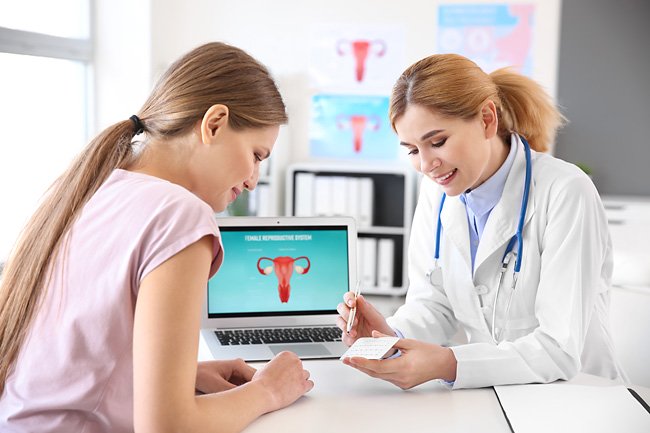
Diagnosis of tubal obstruction
In this case, the following manipulations are carried out:
- Gynecological examination, thanks to which postoperative scars, adhesions, cords, compactions, thickenings and cysts are detected.
- Ultrasound of the female reproductive system makes it possible to identify anatomical changes, inflammatory processes, and neoplasms. It is carried out in the first days of the menstrual cycle.
- Hysterosalpingography allows you to detect the obstruction itself and the location of the obstruction. Before the examination, the woman takes a clinical blood and urine test, and the doctor takes a smear from the vagina for microflora. The hysterosalpingography procedure lasts approximately 30-40 minutes. During the study, a woman may experience discomfort reminiscent of pain during menstruation, and it will be more pronounced in nulliparous girls. Often, to prevent pain and to prevent spasm of the fallopian tubes, which can distort the results of the study, it is recommended to take antispasmodic drugs before taking the test. If the pain is severe, the woman may be offered this procedure under local anesthesia.
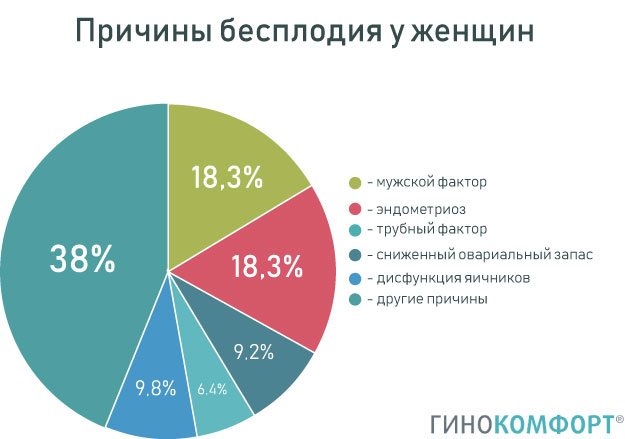
Causes of infertility in women
During hysterosalpingography, a woman lies down on a couch and the doctor injects a radiopaque contrast agent into the uterus with a thin catheter. After fluid enters the uterus and into the tubes in case of obstruction of the fallopian tubes, pathological changes are recorded on the x-ray. To reduce the likelihood of infection during hysterosalpingography, it is recommended to conduct a short course of antibiotic therapy a few days before hysterosalpingography.
- A safer diagnostic method, but less informative, is hydrosonography. The study is carried out with a contrast agent. The method itself is highly sensitive, easily tolerated by women and performed without the use of anesthesia. If the contrast agent leaves the fallopian tubes into the abdominal cavity, then they are passable and the causes of infertility are not associated with pathological changes in the fallopian tubes.
- A more complex diagnostic procedure for tubal obstruction is diagnostic laparoscopy. The operation is performed under general anesthesia and lasts approximately half an hour. During a laparoscopy procedure, an optical device and special instruments are placed through one or two small incisions in the abdomen. Laparoscopy depicts the inner surface of the abdominal cavity and makes it easy to understand pathological changes associated with the outer surfaces of the ovaries, uterus and tubes.
Side effects and contraindications
Contraindications to this study may be exacerbations of gynecological inflammatory diseases, uterine bleeding, changes in vaginal cleanliness without symptoms of the inflammatory process.
An ultrasound examination of the patency of the fallopian tubes is a fairly painless procedure, but some women sometimes experience discomfort in the lower abdomen, as in the first days of menstruation. These sensations can sometimes persist for two to three days after the manipulation.
Tubal obstruction treatment
You can find out how to treat tubal obstruction only after a full examination and only a doctor should decide.
Treatment includes conservative and surgical methods. The choice of treatment method depends on the stage of the pathological process in the fallopian tubes, the location and extent of the area in which the obstruction occurred.
Professor Armen Ter-Hovakimyan on the problem of fallopian tube obstruction. Source - MedPort.ru
Conservative treatment can be effective only in the early stages of the development of tubal obstruction. Hormonal and anti-inflammatory drugs, antibiotic therapy, a vitamin complex are prescribed, and the correct hygiene products for intimate hygiene are selected. Intimate gel “Ginocomfort” with a restorative effect is recommended for women after a course of antibiotic therapy in order to restore normal vaginal microflora and eliminate vaginal discomfort.
Physiotherapy (for example, electrophoresis with absorbable drugs), physical therapy and massage of the pelvic area are often used in combination with the main treatment.

Treatment methods for fallopian tube obstruction
Expert opinion
Drug therapy has proven itself well for functional infertility, but the most effective treatment method is surgery. Nowadays, obstruction of the oviducts is eliminated by laparoscopy - a low-traumatic, quick and effective operation. The surgical technique consists of cutting the adhesions in the pelvis and reconstructing the fallopian tube.
Obstetrician-gynecologist of the highest category Oksana Anatolyevna Gartleb
Much less commonly, an incision in the form of a median laparotomy is used. It is worth remembering that an ineffective first laparoscopy in most cases indicates that the next one will also be ineffective.
The laparotomy technique is used when a woman is diagnosed with serious pathological conditions (for example, a tumor process).
How is echohysterosalpingoscopy performed?
EchoGSS is performed on an outpatient basis and takes from 15 to 30 minutes. The procedure is performed on a gynecological chair under sterile conditions. A specialist injects 20-40 ml of an echo contrast agent (saline solution) into the patient’s uterine cavity using a disposable instrument. The passage of the solution through the channels is visualized on the screen of the ultrasonic scanner in real time, that is, the result is assessed immediately.
If the fallopian tubes turn out to be passable after the procedure, then the echo-contrast substance enters directly into the abdominal cavity without lingering in them. Otherwise, possible deviations are diagnosed.
At the time of the examination or 2-3 hours after it, the patient may feel slight nagging pain in the lower abdomen, so anesthesia with antispasmodic drugs is first performed.
There are cases where, after echocardiography, patients under the influence of saline solution independently separated small adhesions that previously prevented them from becoming pregnant. This procedure has a mild therapeutic effect: after echocardiography, pregnancy can occur immediately.
Treatment of fallopian tube obstruction using traditional methods
Alternative medicine as monotherapy is not justified and can lead to complications. A good effect from the treatment of tubal obstruction is observed as an addition to the main therapy under the supervision of the attending physician.
Treatment with folk remedies includes taking infusions, decoctions, herbal tinctures, as well as local remedies (douching, special suppositories and tampons).
Sources:
- Obstetrics. Clinical lectures, study guide. Makarov O.V. – 2007.
- Ectopic pregnancy. Damirov M.M., publishing house Binom. – 2019
- Guide to outpatient care in obstetrics and gynecology. Practical guide. Kulakov V.I., Prilepskaya V.N., Radzinsky V.E. – 2007.
- Diagnosis of gynecological diseases with a course of pathological anatomy. Serov V.N. – 2003.
Treatment
In general, treatment of tubal factor infertility comes down to restoring the patency of the fallopian tubes. In cases where this is not possible, the issue of in vitro fertilization is decided.
The effectiveness of treatment for this form of infertility depends on the severity of pathological changes in the pelvis. Thus, with a slight severity of the adhesive process, reconstructive operations performed laparoscopically are effective in half of the cases, and in the presence of pronounced changes (widespread adhesive process, pronounced consequences of inflammatory diseases), success can be achieved only in a small percentage of women.
If the specified surgical intervention is carried out, control FGG or HSG after surgery allows for a comparative assessment of the anatomical state of the pelvic organs before and after surgery and determine further tactics for managing the patient.
After treatment, a period of planning and waiting for pregnancy begins, usually lasting 6 months.
If pregnancy does not occur within this period, then the issue of in vitro fertilization (IVF) is decided. Tags: cir in the media
Treatment of adhesions in the appendages and other causes of obstruction
Is adnexal obstruction treatable? Yes, it is being treated, this is evidenced by numerous reviews that former patients post on forums. Treatment is carried out comprehensively and is aimed at eliminating the cause of the pathology - STIs, hydrosalpinx, etc.
Medication method
used in the treatment of acute forms of the disease. It consists of constantly taking medications at a certain dosage. The drugs have different effects on the body: some suppress the vital activity of pathogenic microorganisms, others relieve inflammation, and others resolve adhesions. Medicines are available in the form of tablets and suppositories.
Use of anti-inflammatory drugs:
- Non-steroidal (analgesics): simultaneously relieve inflammation, relieve pain and relieve fever. They block the production of enzymes - prostaglandins, produced when an infection enters the body. They are not synthetic, so they are taken longer than steroid drugs.
- Steroids (glucocorticosteroids are hormones produced by the adrenal glands). They are divided into natural and artificial. The principle of action is to suppress the production of leukocytes produced during inflammation. Tissue erosion at the site of inflammation disappears, pain and fever go away. But steroid drugs cannot be taken for a long time; they are effective for acute inflammation and severe forms of infection.
- Antibiotics
. A drug that destroys pathogenic bacteria can cure obstruction of the fallopian tubes, or more precisely, eliminate the cause of the dysfunction of the appendages - STIs. Antibiotics are taken under the supervision of a doctor in dosage. There is a threat that with long-term use, normal microflora will be suppressed. Therefore, before prescribing antibiotic treatment, the patient undergoes a test for the sensitivity of the microbe to the active substance. Throughout treatment, the types of antibiotics are changed so that microbes do not adapt to the drug. - Hormone therapy
. Often gynecological problems, including blockage of the lumen of the appendages, are caused by hormonal disorders. Depending on how tubal obstruction is treated, the patient is prescribed natural or synthetic hormones that suppress or restore the normal functioning of the organ. - The surgical method
is used in advanced cases, as well as when medication and physiotherapeutic methods become ineffective. Before surgery, the patient undergoes diagnostics to determine the impassable area. It is usually affected by adhesions, overgrown connective tissue or scars. There are various methods of surgical intervention, each of which is effective in a particular case.
Laparoscopy has proven itself to be excellent. This is a minimally invasive method in which the peritoneum of the patient is punctured in several places, and a laparoscope, a long tube with optics and a camera at the end, is inserted through the punctures. With the help of a camera, the image is visible on the screen, and the optics magnify it 3-4 times. The doctor removes adhesions and scars, instantly cauterizing the operated area.
In some cases, laparotomy relieves obstruction of the appendages. An incision is made along the bottom of the peritoneum through which surgery is performed. After the operation, a scar remains and the woman remains in the hospital for at least 5 days.
Reconstructive surgery works in a similar way. It involves transplanting a healthy section of the donor tube to the site of the damaged one. Or this is an artificial restoration of the lumen.
Additional treatments
Additional methods of treating tubal infertility are different options for physiotherapy:
- Electrophoresis
. It has an immunocorrective effect, which consists in exposing the area of the body where the drug is placed to a direct electric current. Medicines are absorbed through the skin in the form of positively and negatively charged ions. In addition, the electromagnetic field improves blood supply and resolves adhesions. - Balneotherapy
. It consists of treatment with mineral waters (nitrogen-siliceous, sodium chloride, hydrogen sulfide). The beneficial effects of medicinal water normalize hormonal levels, relieve pain and inflammation, and calm the nerves. - Ultrasound therapy
has shown high effectiveness in resolving adhesions. This is an in-office procedure in which local areas are exposed to ultrasonic waves. As a result, adhesions soften, blood circulation improves, and soft tissues become elastic. - Treatment with an electrical stimulator.
This way even old scars are eliminated. Using a special apparatus, the area of the fallopian tubes is exposed to electrical impulses with a frequency of 12 Hz. Muscle contraction occurs, as a result of which the lumen of the tube expands, scars and adhesions soften.
With minor damage to the appendages, gynecological massage will help. It is performed by a gynecologist in an examination chair, then the reproductive organs are manually massaged through the vagina. It is rarely used, but it is also quite effective and safe.
Traditional methods can also complement treatment. The boron uterus, which grows in Altai, has shown itself to be effective. It controls estrogen levels. The herb is brewed as a tea along with wintergreen, a plant in the heather family that has antiseptic and healing properties. St. John's wort, flax seeds, sweet clover, coltsfoot, and knotweed help eliminate tubal obstruction.
